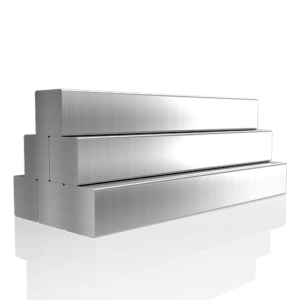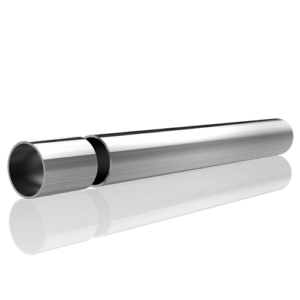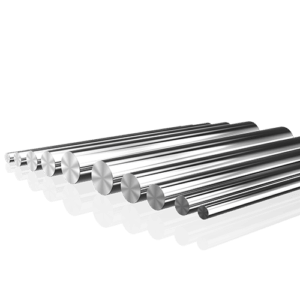Welcome to My Blog!
Before we dive into the content, I’d love for you to join me on my social media platforms where I share more insights, engage with the community, and post updates. Here’s how you can connect with me:
Facebook:https://www.facebook.com/profile.php?id=100090063158454
Now, let’s get started on our journey together. I hope you find the content here insightful, engaging, and valuable.
Table of Contents
Introduction

The mass density of stainless steel is a crucial property for engineers, designers, and manufacturers alike. It plays a significant role in determining how stainless steel performs in various applications, from construction and automotive industries to medical devices and kitchenware. In this blog, we will dive deep into the topic, exploring key facts about the mass density of stainless steel and how it impacts its versatility and suitability for different projects.
Understanding mass density is essential for selecting the right type of stainless steel for specific needs. We will cover its definition, influence on strength and durability, how it varies with different grades, and how to properly use the data to make informed decisions. Let’s start by gaining a solid understanding of the mass density of stainless steel.
What Is the Mass Density of Stainless Steel?
Mass density refers to the amount of mass per unit volume of a material. For stainless steel, it is commonly expressed in grams per cubic centimeter (g/cm³) or kilograms per cubic meter (kg/m³). The mass density of stainless steel is typically around 7.9 g/cm³, which is relatively higher than that of materials like aluminum but lower than other metals such as lead or gold.
The mass density of stainless steel is not a fixed number; it varies depending on the specific alloy. Stainless steel is an alloy primarily made up of iron, chromium, nickel, and other metals, each of which contributes to the material’s overall density. The exact composition can influence the mass density, affecting the metal’s strength, resistance to corrosion, and other mechanical properties.
How the Mass Density of Stainless Steel Affects Its Strength and Durability

The mass density of stainless steel directly impacts its strength and durability. Materials with higher mass densities tend to have better strength and resistance to deformation under stress. For example, stainless steels with higher nickel content, such as 316 stainless steel, have slightly higher mass densities than those with less nickel, contributing to improved resistance to corrosion and higher tensile strength.
However, a higher mass density may not always be ideal, especially for certain applications where weight is a concern, such as in aerospace or automotive engineering. In such cases, materials with lower mass densities may be preferred, as they can reduce the overall weight of the product without sacrificing too much strength.
Key Factors Influencing the Mass Density of Stainless Steel
Several factors affect the mass density of stainless steel, including:
- Alloy Composition: As mentioned, the combination of metals in stainless steel affects its density. For example, adding more chromium or molybdenum can alter its mass density, affecting both mechanical properties and cost.
- Temperature: The mass density of stainless steel decreases as the temperature increases. This change must be considered in industries where stainless steel is exposed to high temperatures, such as in engines or industrial machinery.
- Processing Method: The way stainless steel is processed, whether through casting, forging, or machining, can impact its final density. Heat treatments or cold-working processes may slightly alter the mass density as well.
Comparing the Mass Density of Different Stainless Steel Grades

The mass density of stainless steel can vary significantly between different grades. Here is a comparison of some commonly used grades, showing their approximate densities:
| Stainless Steel Grade | Mass Density (g/cm³) | Key Features |
|---|---|---|
| 304 Stainless Steel | 7.93 g/cm³ | Excellent corrosion resistance, commonly used in kitchenware and medical applications. |
| 316 Stainless Steel | 7.98 g/cm³ | Higher corrosion resistance, ideal for marine environments and chemical processing. |
| 430 Stainless Steel | 7.75 g/cm³ | Good formability and corrosion resistance, often used in automotive and appliance applications. |
| 304L Stainless Steel | 7.90 g/cm³ | Low carbon content for enhanced welding properties, used in welding applications. |
| 17-4 PH Stainless Steel | 7.85 g/cm³ | Precipitation-hardened stainless steel with high strength and resistance to corrosion. |
These values are approximate, and the actual mass density of a specific stainless steel product can vary slightly based on its composition and processing.
Applications of Stainless Steel Based on Mass Density
Different applications take advantage of the mass density of stainless steel to optimize performance. For instance, in the aerospace industry, where weight is critical, lighter stainless steel alloys are chosen to minimize weight without compromising strength. In contrast, in applications like industrial machinery or construction, where strength and durability are paramount, stainless steel alloys with higher mass densities are used to ensure that the material can withstand heavy loads and harsh conditions.
Choosing the right grade based on its mass density is an important consideration for anyone working with stainless steel, as it can directly affect the cost, performance, and longevity of the final product.
Conclusion

The mass density of stainless steel is an important property that influences its strength, durability, and suitability for various applications. By understanding the key facts about this material property, manufacturers and engineers can make more informed decisions about which grade of stainless steel to use for their projects. Whether you are designing kitchenware, constructing buildings, or working on aerospace components, understanding the mass density of stainless steel helps you choose the right material for the job.
In summary, the mass density of stainless steel is a critical factor in determining the material’s behavior under stress, its weight, and its suitability for specific applications. With careful consideration of the mass density, you can ensure that your stainless steel products perform optimally in their intended use.
FAQ
What is the typical mass density of stainless steel?
The mass density of stainless steel typically ranges around 7.9 g/cm³, but it can vary depending on the alloy composition.
How does the mass density affect stainless steel’s strength?
A higher mass density generally means greater strength and resistance to deformation, but it may also lead to increased weight. The choice of mass density depends on the specific application.
Does the mass density of stainless steel change with temperature?
Yes, the mass density of stainless steel decreases as the temperature increases, so temperature must be considered in high-heat applications.
Why is the mass density of stainless steel important in manufacturing?
The mass density helps determine the material’s weight, strength, and resistance to various environmental conditions, which is essential when selecting the right grade for a specific purpose.
Are there stainless steel alloys with lower mass densities?
Yes, some stainless steel alloys have lower mass densities, often due to variations in their composition, which can be beneficial for specific applications requiring lighter materials.
